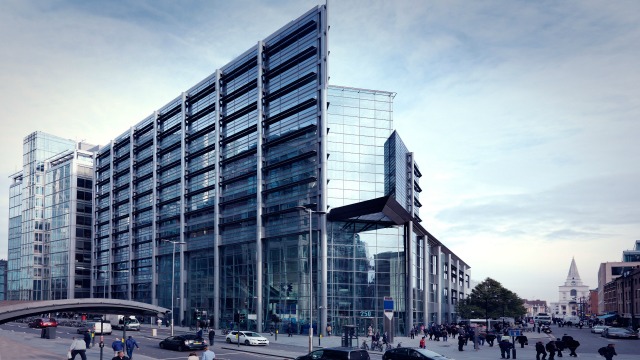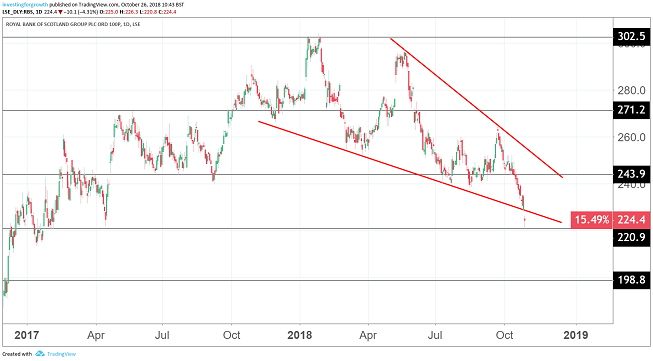Selling gathers pace at Royal Bank of Scotland
26th October 2018 11:02
by Lee Wild from interactive investor
Despite some signs of improvement, investors are in no rush to back RBS as the UK races toward Brexit, writes Lee Wild, head of equity strategy at interactive investor.

Whether or not Royal Bank of Scotland made more money than many expected in the third quarter depends on which line on the income statement you look at, but whichever it is, weary investors have lost faith with RBS after these results.
A third-quarter operating profit of £961 million was better than the £892 million consensus estimate, as was a 15.4% increase in income. But despite a significant improvement on previous quarters, a £448 million attributable profit was definitely sub-par.
Aggressively fighting for share of the residential mortgage market has had an inevitable impact on net interest margin, which was down 8 basis points on the second quarter at 1.93%. Strip out one-off items and it was still down 5 basis points, but the year-on-year decline is more like 19 basis points. Higher interest rate did boost deposit margins, but not nearly enough.
Costs are always closely watched and operating expenses were up almost £300 million on a year ago, including another £200 million related to PPI. Further staff cuts and shrinkage elsewhere should at least partially mitigate conduct costs going forward, but the market is impatient.
Booking another £100 million impairment linked to "the more uncertain economic outlook" does not inspire confidence with the worst of Brexit still to come.

Source: TradingView (*) Past performance is not a guide to future performance
Elsewhere, higher profit and a further decline in risk-weighted assets did turbocharge the common equity tier 1 (CET1) ratio 60 basis points to 16.7%, and tangible net asset value (TNAV) per share was about right at 288p.
Despite improvements across the business, RBS is easily the worst performing retail bank since the Credit Crunch and for much of the entire nine-year equities bull run. RBS shares have sunk to their lowest price since February 2017 having lost a quarter of their value since January.
The shares, on around 9 times earnings estimates for 2019, are not expensive, and returning to the dividend list over the summer was hugely significant for RBS. However, a modest yield cannot support a struggling share price, and a lurch lower Friday morning through a clear downtrend (see lower red line on chart above) spells further trouble for the lender.
Success for RBS depends on Brexit and how it impacts the UK economy. Rising interest rates are typically good for bank sector margins, but an economic downturn will damage demand for more expensive loans and mortgages. Bank profits will suffer.
*Horizontal lines on charts represent previous technical support and resistance. Red lines represent a chart pattern developed through 2018.
These articles are provided for information purposes only. Occasionally, an opinion about whether to buy or sell a specific investment may be provided by third parties. The content is not intended to be a personal recommendation to buy or sell any financial instrument or product, or to adopt any investment strategy as it is not provided based on an assessment of your investing knowledge and experience, your financial situation or your investment objectives. The value of your investments, and the income derived from them, may go down as well as up. You may not get back all the money that you invest. The investments referred to in this article may not be suitable for all investors, and if in doubt, an investor should seek advice from a qualified investment adviser.
Full performance can be found on the company or index summary page on the interactive investor website. Simply click on the company's or index name highlighted in the article.